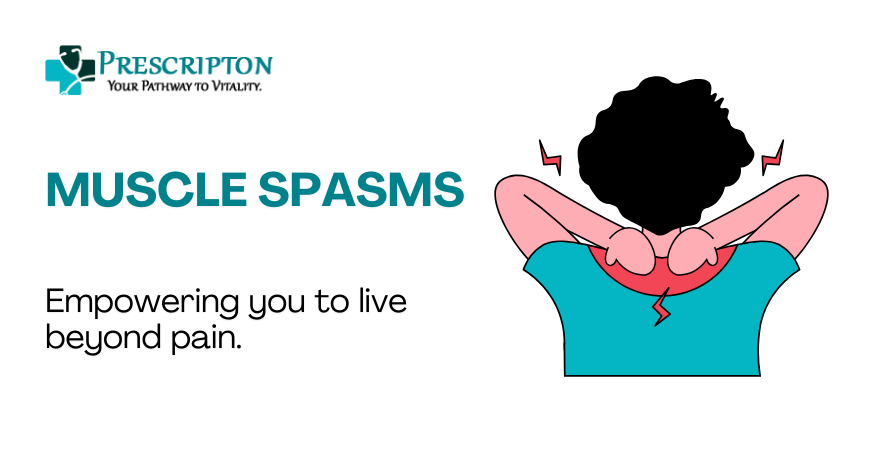
Muscle Spasms: Causes and Cures
Muscle spasms, also known as muscle cramps, are involuntary contractions of one or more muscles. They can be painful and disruptive, often occurring suddenly and without warning. While muscle spasms can affect anyone, athletes are particularly prone to them due to the intense physical demands of their sports. In this blog, we’ll explore the causes of muscle spasms in athletes, effective prevention strategies, and treatments to alleviate them.
What Causes Muscle Spasms in Athletes?
Muscle spasms can occur for various reasons, and understanding these causes is crucial for prevention. Common factors contributing to muscle spasms in athletes include:
- Dehydration: When athletes sweat, they lose essential fluids and electrolytes, which can lead to muscle cramps.
- Electrolyte Imbalances: Sodium, potassium, magnesium, and calcium are key electrolytes that help muscles function properly. Imbalances in these minerals can trigger muscle spasms.
- Overexertion: Intense or prolonged physical activity can lead to muscle fatigue, increasing the risk of spasms.
- Inadequate Warm-up and Stretching: Insufficient warm-up and stretching before exercise can make muscles more susceptible to cramping.
- Poor Conditioning: Athletes who are not in optimal physical condition may experience spasms due to increased muscle strain.
- Nerve Compression: Certain conditions that compress nerves, such as herniated discs or spinal stenosis, can cause muscle spasms.
- Medications: Some medications, like diuretics or statins, can contribute to muscle spasms as a side effect.
Preventing Muscle Spasms in Athletes
Prevention is the key to reducing the frequency and severity of muscle spasms. Athletes can take several proactive steps to minimize the risk:
- Stay Hydrated: Proper hydration is essential for maintaining electrolyte balance and preventing muscle cramps. Athletes should drink water throughout the day and replenish fluids during and after exercise.
- Replenish Electrolytes: Consider using sports drinks or electrolyte supplements to replace lost minerals during intense workouts. Foods rich in electrolytes, such as bananas, oranges, and leafy greens, can also be beneficial.
- Warm-up and Stretch: A proper warm-up routine prepares muscles for physical activity and reduces the risk of spasms. Stretching helps increase flexibility and reduce muscle tension.
- Gradual Conditioning: Gradually increase the intensity and duration of workouts to allow muscles to adapt and strengthen over time.
- Cross-Training: Engage in different types of exercise to reduce muscle fatigue and promote overall muscle balance.
- Rest and Recovery: Give your muscles adequate time to recover between workouts. Incorporate rest days into your training schedule.
- Proper Footwear: Wear appropriate footwear that provides proper support and cushioning to reduce strain on muscles.
Treating Muscle Spasms in Athletes
Despite prevention efforts, muscle spasms may still occur. When they do, it’s important to know how to treat them effectively. Here are some common methods for relieving muscle spasms:
- Stretching and Massage: Gently stretching the affected muscle can help release the cramp. Massage the area to increase blood flow and reduce tension.
- Heat and Cold Therapy: Applying heat can relax muscles, while cold therapy can reduce inflammation. Use a heating pad or warm compress for heat therapy and ice packs for cold therapy.
- Hydrate and Replenish Electrolytes: Drink water and consume foods or drinks rich in electrolytes to restore balance.
- Rest and Relaxation: Give the muscle time to relax and recover. Avoid strenuous activity until the cramp subsides.
- Pain Relief Medications: Over-the-counter pain relievers like ibuprofen can help reduce pain and inflammation associated with muscle spasms.
- Medical Consultation: If muscle spasms are severe or recurring, consult with a healthcare professional. They can identify underlying causes and recommend appropriate treatment.
Conclusion
Muscle spasms are a common issue for athletes, but they don’t have to disrupt your training or performance. By understanding the causes of muscle spasms and implementing effective prevention and treatment strategies, athletes can reduce the risk of cramps and enjoy their activities with greater comfort and confidence. Remember to listen to your body, stay hydrated, and prioritize proper conditioning to keep muscle spasms at bay. If muscle spasms persist or cause significant discomfort, seek medical advice to ensure proper diagnosis and treatment.
